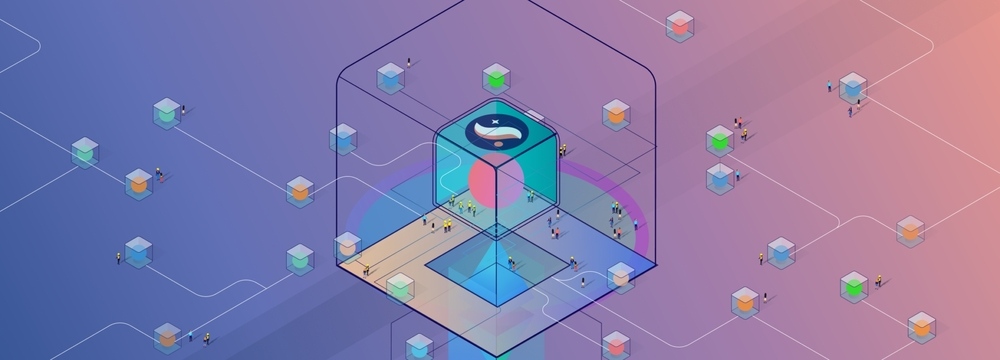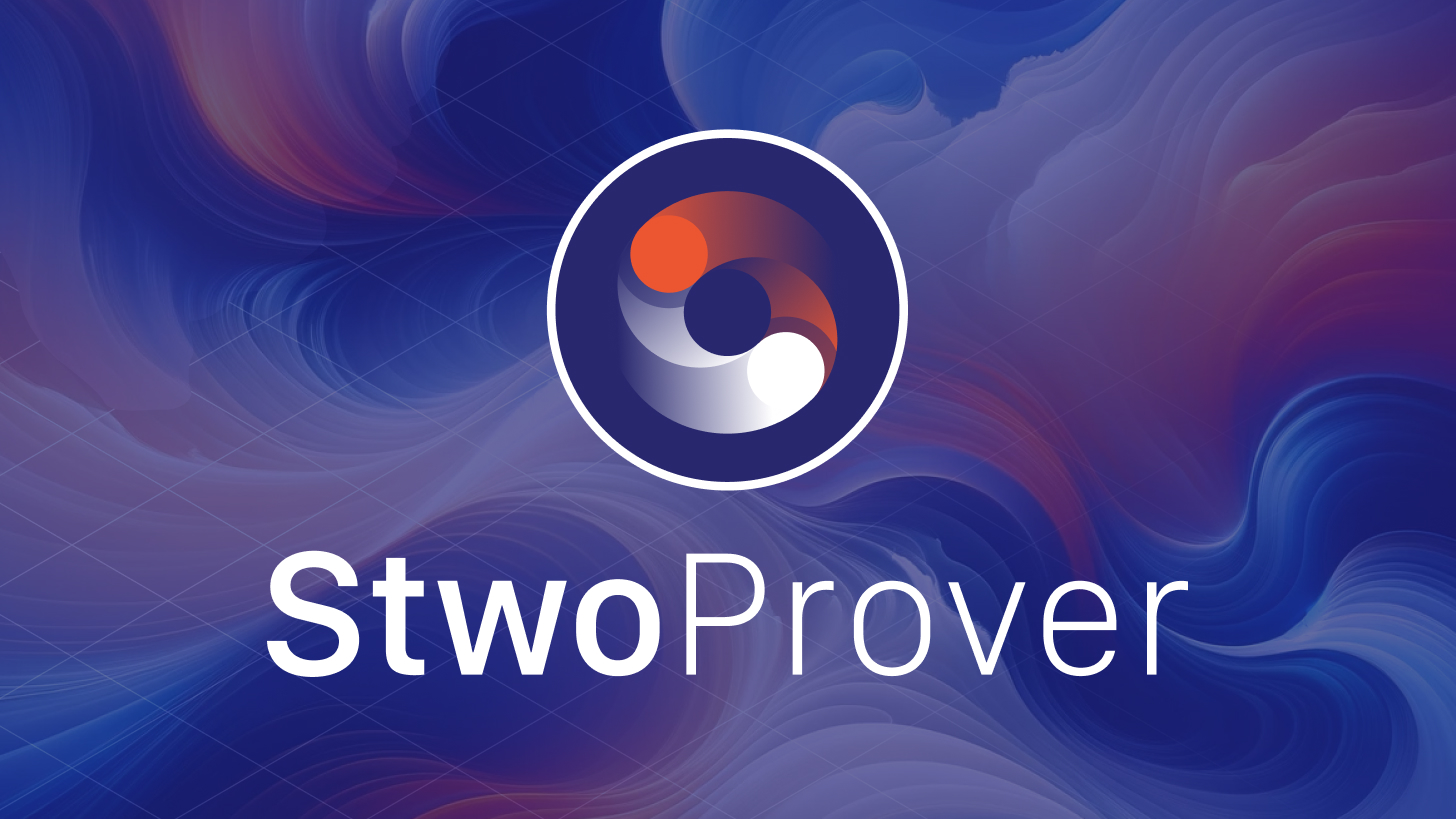Three of our superstar(k)s talk about what they think 2024 will look like. Hint: Super scaling is around the corner.
TL;DR
- The 2024 roadmap, with the continued maturation of the Starknet tech stack, will unlock new capabilities and ecosystems.
- Starknet users will enjoy smoother UX and much lower transaction costs; developers will receive a huge boost in scalability.
- Starknet is the natural home for creative dApps with complex logic, in both the DeFi and gaming verticals.
No one can predict the future, but we can still guess and use our intuition. So, what should we expect from 2024? We asked StarkWare’s Co-Founder and President, Eli Ben-Sasson, StarkWare’s Head of Product, Avihu Levy, and StarkWare’s Head of Business Development, Liron Hayman, for their thoughts on what might be the upcoming trends and developments on Starknet and blockchain in general.
What, in your opinion, will be the next trend for dApps and Devs in 2024?
 Eli Ben-Sasson: Trends are especially hard to predict. It’s usually the newer ideas that catch on as trends, but we have also seen situations where ideas were revived to become massive trends, such as NFTs, in the last bull run.
Eli Ben-Sasson: Trends are especially hard to predict. It’s usually the newer ideas that catch on as trends, but we have also seen situations where ideas were revived to become massive trends, such as NFTs, in the last bull run.
If forced to predict, I’ll say that onchain gaming, which has survived the bear market, will begin to catch on more rapidly. That’s especially true on Starknet, which allows developers to execute the entire logic of the game onchain thanks to high throughput, cheap transactions, and Native Account Abstraction (AA). So we will have a situation in which not only are the assets themselves onchain but so is the rest of the game.
 Avihu Levy: We’re already seeing interest in fully onchain gaming, and this will grow with the scalability that Starknet is offering and abstracting away the blockchain to a more Web-2-like experience. Privacy apps could begin to catch on as consumers start using the blockchain more frequently.
Avihu Levy: We’re already seeing interest in fully onchain gaming, and this will grow with the scalability that Starknet is offering and abstracting away the blockchain to a more Web-2-like experience. Privacy apps could begin to catch on as consumers start using the blockchain more frequently.
 Liron Hayman: I share the belief that onchain gaming will continue its growth. Ever since Ethereum came onto the scene, there’s been this buzz in the community about totally transforming gaming by putting them onchain—this idea of self-sovereign, unchangeable games. The cool part is having the game’s rules locked in an unalterable smart contract on the blockchain. This way, players know the game’s going to stick around, and the rules won’t just switch up unless there’s a community decision.
Liron Hayman: I share the belief that onchain gaming will continue its growth. Ever since Ethereum came onto the scene, there’s been this buzz in the community about totally transforming gaming by putting them onchain—this idea of self-sovereign, unchangeable games. The cool part is having the game’s rules locked in an unalterable smart contract on the blockchain. This way, players know the game’s going to stick around, and the rules won’t just switch up unless there’s a community decision.
Until now, creating in-game assets on blockchain has been the extent of that vision in practice, while the game’s real mechanics were still handled offchain. However, with platforms like the DoJo operating on Starknet, things are changing. We’re talking way lower gas costs and a smooth UX, thanks to stuff like native account abstraction. It’s a pretty big leap forward in being able to put the entire game logic onchain.
What is the most interesting thing expected to happen on Starknet in 2024?
Eli: We can expect to see the mass adoption of blockchain and a growing recognition that Starknet is the key to scaling Ethereum. We will see developers continuing to use STARK proofs—Starknet’s version of validity proofs—to test the boundaries of blockchain applications and build use cases on Starknet that require speed and low cost. This trend has already begun, as Starknet’s ecosystem has become the 8th largest in the industry already, and we will see more growth as the tech stack continues to mature.
Avihu: While Starknet’s developer community is now in the top 8 in the crypto ecosystem, I predict it will move up to the top 5 in 2024.
A key factor driving that growth is the community-owned infrastructure projects on the network, such as the Stone Prover, the masterful engine tasked with compressing transactions and crafting cryptographic proofs that StarkWare open-sourced last August. I also think we’ll see Cairo becoming the most popular smart contract language and attracting more smart contract developers to Starknet’s ecosystem, boosting development in the community.
On the user side, we will see better user experience and lower costs. With the introduction of Ethereum’s EIP-4844 (shard blob transaction) and, later down the road, Starknet’s Volition (Flexibility in data availability), there will be a dramatic reduction in the cost of data. Yes, that means cheaper transactions.
Liron: Starknet’s Volition will cut gas costs by roughly 90% and will allow users to choose to store their data on Starknet. When this happens, developers of gaming apps, for example, will see a huge boost in the scalability they need to acquire hundreds of millions of users. Volition will craft a very exciting year ahead.
What Ethereum challenges do you think will be solved by the end of 2024?
Eli: Data availability will become less of an issue on Ethereum once the EIP-4844 update is implemented. That’s expected to boost data availability five to tenfold, in my estimation. Then add Volition, and you get another significant reduction in data availability costs on top of that when using Starknet.
Avihu: In my opinion, it’s all about the data availability. As Ethereum creates more capacity on the base layer and L2s—especially Starknet—offer added capacity on top of that, we could see an explosion in use cases that require scalability.
Liron: Data availability is becoming a big hurdle for broader adoption, especially for Layer 2s on Ethereum. Fortunately, that problem will start to fade with EIP-4844. It’s really going to be a game-changer for the industry.
What field do you want to see developed in 2024 on Starknet or Ethereum?
Eli: I’m most interested in seeing a genuine commitment to developing mechanisms and protocols that take us back to the original values of blockchain—fairness, transparency, and decentralization—instead of worrying about things like MEV.
In practice, that means working toward truly decentralized governance, proof of humanity, and the public funding of goods and services. These are the goals for which blockchain was introduced to the world in the first place, and it’s the ecosystem’s responsibility to drive them forward.
Avihu: Starknet’s strength is supporting heavy computation as well as cryptographic primitives. As such, I expect to see more onchain gaming and more sophisticated, easy-to-use wallets that abstract the blockchain experience for users.
Liron: Trading apps on Starknet and Ethereum have demonstrated the value of providing self-custody and instant settlement to traders. I’m really keen on seeing more traditional financial exchanges and institutions embrace blockchain technology.
Imagine a trader buying a stock on the New York Stock Exchange (NYSE). They should be able to independently check that every single trade in the system is playing by the same rules. And they can do this using existing tools on Starknet.
Which industries do you think will join the blockchain next?
Eli: Again, it’s hard to say, but there have been industries sitting on the sidelines who are keen to return to the ecosystem but have hesitated due to many reasons, among them the need for scalability. These range from traditional financial institutions and payment-processing platforms to traditional gaming companies.
My hope is that, as they see scaling solutions making use of cases that were previously unthinkable become economically viable, they will finally join the fray.
Avihu: I think we will see more tokenization of real-world assets.
Tokenization has been widely seen as a no-brainer use case for blockchain. The potential is endless, from the tokenization of carbon credits to the tokenization of real estate shares and central bank digital currencies (CBDCs). As L2s like Starknet take scalability on Ethereum up a notch, we’ll see more and more of that.
Liron: Predicting the future of technology can be tough, but industries burdened by operational overhead and slow trade settlements could greatly benefit from blockchain technology. The tokenization of real-world assets, enabling global, real-time, and instant trade settlements, is a game-changer. This innovation is likely to attract significant interest from major players in traditional finance, many of whom are just beginning to explore this space.
What are you most looking forward to in the decentralization of Starknet?
Eli: Last August, we open-sourced the much anticipated Stone (STARK One) Prover, leveling up the community’s ability to create new exciting projects. As a company with innovation at its core and decentralization as a key value, we already have teams working on further improvements and progress on the prover front. StarkWare will offer the meanest, leanest, safest, and fastest prover on the market. It will help client-side proving and reduce Starknet latency and costs.
Avihu: Starknet is really moving rapidly towards decentralization. Our Devonomics Pilot Program, which distributes some of the fees collected on Starknet to devs, is also a driving factor of decentralization.
Liron: When we talk about decentralization in blockchain, it’s common for folks to immediately think of consensus mechanisms. But another thrilling—and human—aspect to it is decentralization at the social and engineering levels. I’m really excited about how Starknet’s tech stack is evolving into a more globally distributed network, drawing in dynamic participants from across the world, and I’m looking forward to seeing that continue.
What levels of scale do you think Starknet will reach by the end of 2024?
Eli: In terms of steps, I’d say 100x scale of Ethereum in computational power.
Avihu: 10x Ethereum in computation power at much less than 1/10th of the cost.
Liron: I’m hesitant to put a specific number on it, but I can certainly speak about the trend. Thanks to the prover/verifier architecture, light nodes can be incredibly efficient. Instead of verifying each transaction individually, they can focus on verifying proofs, which is much less resource-intensive. This approach significantly lowers the hardware demands for a light node, paving the way for transaction processing speeds that are far higher than what we’re currently experiencing. With some optimism, I hope we can achieve this by the end of next year.
_______
It’s going to be an exciting year!
Stay connected and follow us on Twitter – StarkWare and Starknet, and join our Community Forum and Discord.



